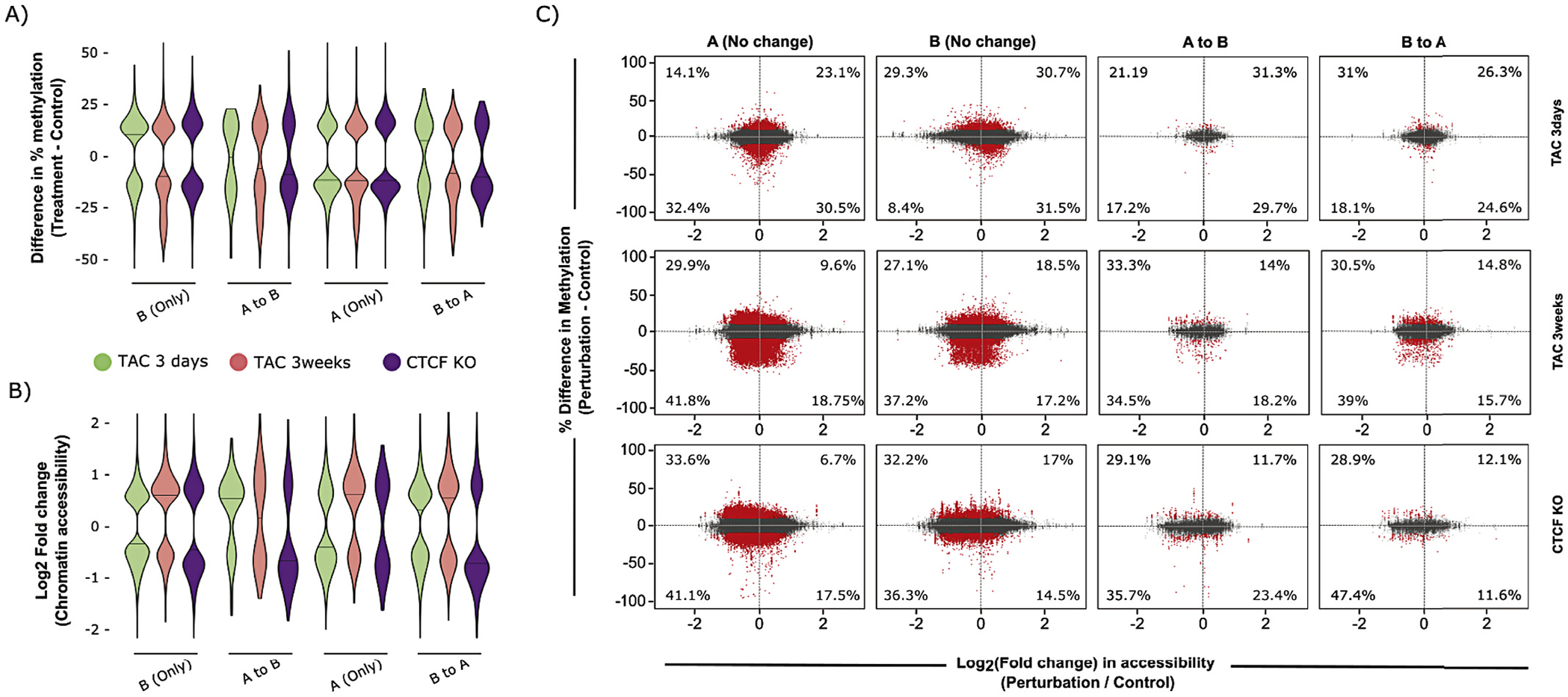Fig. 7.

Integration of DNA methylation and chromatin accessibility data in regions that change compartmentalization with disease. (A) Percent methylation differences of differentially methylated CpGs after 3 days TAC (green), 3 weeks TAC (red) or CTCFKO (purple), when compared to control, that remain in the same compartment (A only, B only) and that change compartments (A to B, B to A) reveal no relationship between DNA methylation changes and compartment dynamics after cardiac stimulus. (B) Log2(fold change) in chromatin accessibility for differentially accessible (FDR < 0.05) ATAC-seq peaks after 3 days TAC, 3 weeks TAC or CTCFKO (when compared to control), for peaks changing or remaining in the same compartment, reveals no relationship between chromatin accessibility changes and compartment dynamics after cardiac stimulus. (C) Data integration chart with each point representing percent methylation change of CpGs that lie within 5 kb bins remaining in the same compartment (A or B), or changing compartmentalization (A to B or B to A) with disease along the y-axis (significant changes indicating average methylation difference of >10% and q < 0.05 shown in red). The x-axis indicates log2(Fold Change) of chromatin accessibility of the 5 kb bins corresponding to these CpGs. Percentages within the charts indicate proportion of significantly differentially methylated CpGs (red points, average methylation difference > 10% and q-value <0.05) within each quadrant that overlap with regions undergoing significant changes in chromatin accessibility (FDR < 0.05). These data demonstrate that local accessibility and DNA methylation cues are not deterministic of global chromatin structure (and vice versa) and that these features do not predict changes in compartmentalization with heart failure. As an example, the expected decrease in chromatin accessibility and DNA methylation was not prominent in regions that changed from active (A) to inactive (B) compartmentalization with cardiac stress (instead, all possible behaviors were detected without any leading trend). (For interpretation of the references to colour in this figure legend, the reader is referred to the web version of this article.)
